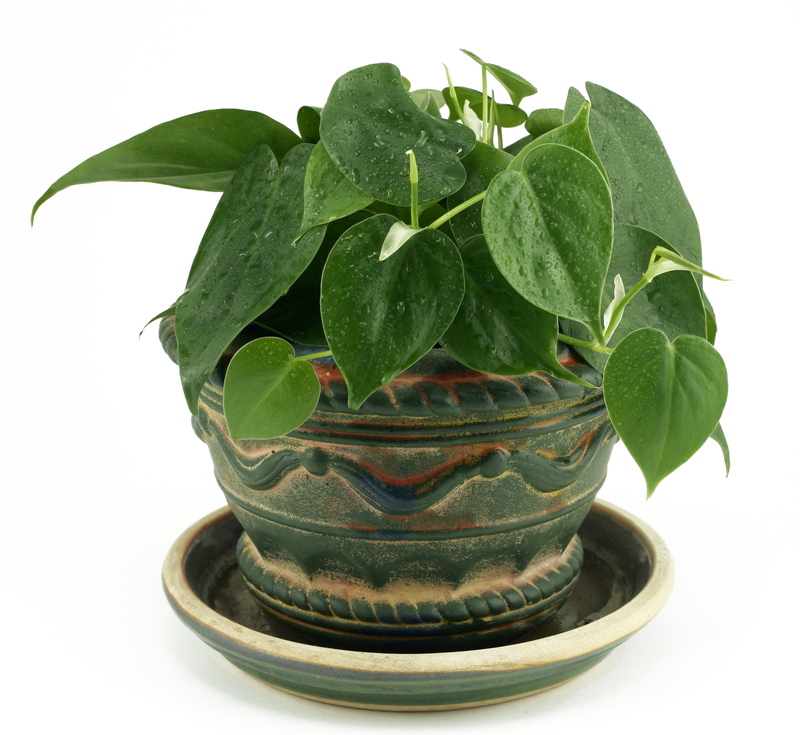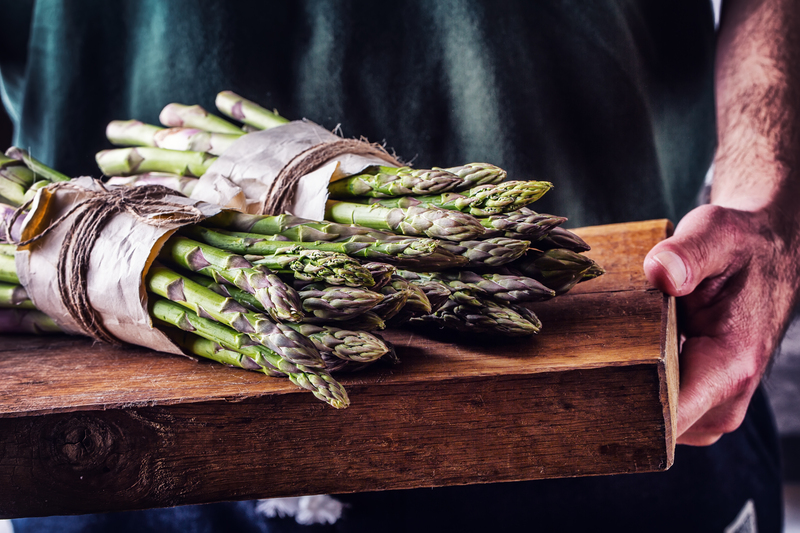Winter Plant Security: How to Keep Your Garden Safe
Posted on 26/05/2025
Winter Plant Security: How to Keep Your Garden Safe
As the chilly whispers of winter approach, every gardener faces a common challenge: how to safeguard their precious plants until spring returns. Winter plant security is not merely about covering flowers--it's about comprehensive planning, clever strategies, and understanding the needs of your unique garden. In this in-depth, SEO-optimized guide, we share expert tips, practical methods, and creative ideas for protecting your garden during winter. Ensure your oasis thrives--no matter how cold it gets!
Why Is Winter Plant Security Important?
The frosty season is notorious for damaging garden plants. Freezing temperatures, snow, frost, and biting winds can cause serious harm, from root injuries to desiccation (drying out). Even dormant plants are at risk if winter plant protection measures are neglected. Securing your plants in winter is essential to:
- Prevent winter kill (root, stem, or bud damage caused by cold)
- Maintain healthy soil structure
- Protect plant roots from freeze-thaw cycles
- Keep pests and diseases at bay
- Promote vigorous spring growth

Understanding Your Garden's Winter Challenges
Every garden is different--microclimates, wind exposure, soil types, and native vs. non-native plants all influence winter hardiness. Before applying winter security for your plants, assess these crucial factors:
- USDA Hardiness Zone: Determines what plants tolerate local winters
- Prevailing winds and snowfall amount
- Sunlight availability during winter months
- Drainage conditions: Waterlogged soil is a recipe for root rot
- Presence of salt (from road de-icing) or animal pests
Tip: Record frost dates and observe which parts of your yard are most exposed or sheltered.
Essential Techniques for Winter Plant Security
1. Mulching for Winter Protection
Mulch acts as a natural insulating blanket, protecting roots from freeze-thaw cycles and moderating soil temperature. For winter garden security:
- Apply a 2-4 inch layer of organic material (shredded leaves, straw, bark) after the ground freezes slightly.
- Avoid mulching right up to the stem or trunk to prevent rot and rodent damage.
- In very windy areas, anchor light mulches with branches or netting.
2. Covering Plants: Frost Blankets and Cloches
When a harsh cold snap is predicted, frost protection coverings can mean the difference between survival and plant loss. Consider these options for winterizing garden plants:
- Frost blankets: Lightweight, breathable fabrics that trap heat around plants
- Tarps or old sheets (for emergency overnight protection)
- Plastic cloches or bell jars for small shrubs and perennials
- Row covers for low-growing vegetables and annuals
*Remember: Avoid leaving plastic or airtight covers on during warm, sunny days to prevent overheating and condensation.*
3. Windbreaks and Shielding Strategies
Winter winds can quickly dry out evergreen foliage and even desiccate winter-dormant branches. For optimum protection:
- Use burlap screens or snow fences to reduce wind exposure.
- Group container plants together on the leeward (protected) side of structures.
- Build simple frames around vulnerable plants and wrap with burlap or shade cloth.
- For small gardens, plant winter-hardy hedges as a natural windbreak.
4. Watering Wisely Through Winter
Surprisingly, many winter plant losses occur due to dehydration, not cold. Evergreens and shallow-rooted species still lose moisture when soil is frozen. How to keep your garden safe:
- Water deeply before the ground freezes for good root hydration.
- During warm, dry spells, check soil moisture and water if possible.
- Good drainage prevents ice damage and root rot; amend clay soil with compost if needed.
5. Pruning: Wait Until Late Winter
Avoid major pruning in early winter--fresh cuts make plants more vulnerable to frost and disease. For optimal winter plant safety:
- Remove only dead, diseased, or broken branches before mid-winter, using sharp tools.
- Main pruning of trees and shrubs should be tackled in late winter or early spring, before new growth starts.
Special Security Measures for Different Plant Types
Protecting Perennials and Shrubs
- Mulch generously around the base but keep away from stems.
- For marginally hardy species, use extra straw or add a protective cover.
- Wrap delicate or newly planted shrubs with burlap or frost cloth, especially roses, hydrangeas, and camellias.
Winter Security for Evergreens
- Spray with anti-desiccant (anti-transpirant) to reduce moisture loss.
- Shield from harsh winds using fences or burlap wraps.
- Brush off heavy snow with a broom to prevent limb breakage.
- Do not shake branches--this can cause them to snap!
Safeguarding Container Plants in Winter
- Move pots close to the house or into a garage/sheltered area.
- Wrap containers with insulation (bubble wrap, burlap, blankets).
- Elevate pots on bricks to prevent waterlogging and ice damage.
- For tender specimens, consider bringing them indoors under grow lights.
Winterizing Vegetable Beds
- Remove spent crops and add a thick layer of mulch or cover crop (like winter rye).
- Cover winter crops (lettuce, spinach, kale) with tunnels or row covers for continued harvest.
- Insulate root vegetables (carrots, parsnips) with a layer of straw to harvest through winter.
Pest and Animal Proofing for Winter
Winter garden security isn't just about weather. Hungry rabbits, deer, and rodents emerge when food is scarce. Safeguard your landscape by:
- Installing mesh or hardware cloth around trunks and low-growing shrubs to prevent gnawing
- Using thorny cut branches or commercial repellents for extra defense
- Clearing debris, fallen fruit, and brush piles that attract pests
- Regularly inspecting for tunnels, chewed bark, or burrows
Common Winter Plant Protection Mistakes to Avoid
- Applying mulch too early: Traps heat and moisture, inviting rot and rodents.
- Leaving covers on too long: Causes overheating and fungal problems on sunny days.
- Using plastic wraps directly on plants: Retains moisture, increasing disease risk.
- Neglecting to water--especially evergreens--before soil freezes.
- Not checking for hidden pests under winter covers.
Planning Ahead: Long-Term Winter Security For Your Garden
Choose Hardy Varieties
For lasting success, select plants matched to your local climate. Invest in varieties labeled for your hardiness zone--or a bit colder for added security!
Design With Protection in Mind
- Site sensitive plants in sheltered spots (near walls, fences, or evergreen windbreaks).
- Build raised beds for better drainage and root insulation.
- Use rocks or low walls to trap solar warmth near tender species.
Regular Maintenance
Keep up with season-long chores:
- Clean tools to prevent spreading disease.
- Dispose of fallen leaves, as some harbor pests or disease spores.
- Amend soil with compost for future resilience.
Helpful Products and DIY Solutions for Winter Plant Security
Commercial Winter Plant Protection Options
- Plant jackets, cones, and insulated bags for individual plants
- Burlap rolls, frost cloth, and row cover kits
- Anti-desiccant sprays for evergreens
- Deer and rabbit repellents (soap bars, dried blood, scent-based sprays)
DIY Winter Security Hacks
- Make easy frost covers from old sheets, blankets, or painter's drop cloths (avoid plastic film directly on foliage).
- Use recycled milk jugs with bottoms cut off as cloches for young plants.
- Bundle straw around tender tree trunks and secure with twine for insulation.
- Construct simple wooden frames and drape them with burlap for a custom windbreak.

Frequently Asked Questions on Winter Plant Security
When should I start winterizing my garden plants?
Begin preparations after the first frost, but wait until soil is cold (not yet frozen) before adding insulation mulch or covers. This usually occurs in late autumn.
What is the best mulch for winter protection?
Shredded leaves, pine needles, straw, or bark mulch are excellent choices. They insulate well, breathe, and improve the soil as they break down.
Do potted plants need more protection in winter?
Absolutely. Containers freeze and thaw much faster than in-ground beds, putting roots at risk. Move sensitive pots indoors or group and wrap them for added warmth.
How do I know which plants need winter protection?
Check your plant tags and USDA hardiness zone. Generally, evergreens, newly planted shrubs, borderline-hardy perennials, and container plants are most vulnerable.
Conclusion: Ensure Your Garden's Safety This Winter
Winter plant security is a proactive process--every little bit of effort now results in healthier, more beautiful plants come spring. By understanding your local climate, using the best protective methods, and keeping an eye out for both weather and wildlife threats, you can ensure your garden stays safe through winter. Whether you have a sprawling landscape or a collection of potted patio plants, these strategies will shield your garden from winter's worst.
Don't let winter catch your garden off guard. Start preparing today--and enjoy a head start on next season's growth!



